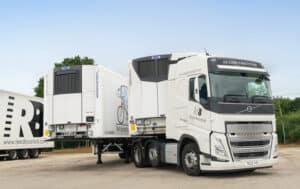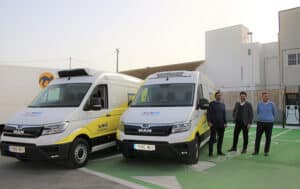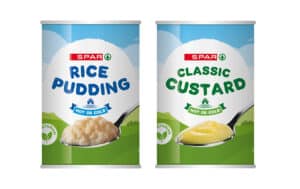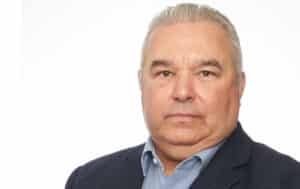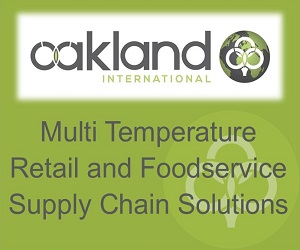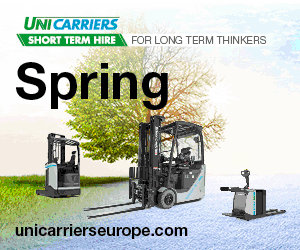As the industry faces pressure to provide more environmentally friendly solutions to transporting goods, many companies are taking stock of the impact that this will have on their day-to-day operation. Can operators afford to adopt new green technologies to coexist with new regulations? Do current measures go far enough to minimise the impact on the environment? Are there solutions that can work to the benefit of everyone? To answer these questions, I brought together three experts who have dedicated their careers to help create a sustainable and emission-free future for commercial transport.
Norman Highnam
A leadership award winning and published transport refrigeration consultant who has spent over 35 years in the industry at all levels from engineering to senior board level appointments. Norman has gained a strong reputation for helping people understand the industry and actively lobbies for engineer safety including the removal and control of emissions in the transport refrigeration sector. www.highnamassist.co.uk
Lionel Curtis
Lionel has over 40 years of industrial experience and has developed low and zero-emission cars, vans, trucks & buses for more than 30 years. He spreads his working time now between Aerodyne Global Ltd, a number of EV-related projects and Design for Manufacture projects in the broader vehicle industry but ALWAYS with a carbon reduction optic. He is always keen to look at the Biggest Possible Picture including operation and installation to achieve the greatest benefit for the smallest change.
Hans Opdam
Hans Opdam started developing solutions for energy-saving transport technology during his position as Head of R&D at Dutch sustainable energy company Econcern. In 2005, Hans and a team of physicists were tasked with identifying solutions for preventing energy loss at the most vulnerable stage of the cold chain – door openings during deliveries. Their solution became the prototype for BlueSeal air curtains, leading Hans to form the company Brightec in 2010. Today, BlueSeal air curtains are a leading solution for maintaining cargo temperature during deliveries and have been widely adopted by food and pharmaceutical companies worldwide. www.brightec.nl
Are we at a point where lowering vehicles emissions is an affordable option for smaller companies?
NH Watching the business sector and the business social chatter, I believe that we are at the stage of acceptability to remove emissions and there is a growing drive to a Justifiable Transition to the targeted result of zero-emission freight and public transport. But I am a firm believer that we need to include all areas urban and rural as one, remove old equipment from use and not export to developing countries to deal with.
LC Companies large and small have a responsibility to reduce emissions. Until recently, nobody had the choice when buying (new) vehicles – Euro 6 or nothing. We now have a choice and we need to look carefully at our operations to select the right vehicle. It is not sufficient to think “I’ll fill up with electricity rather than diesel”. That is never going to make the biggest difference. Are you loading out (either weight or bulk)? You should be. Are you running optimised route planning? You should be. Are you training your drivers for ecological driving? You should be.
And if electric doesn’t suit everything you do, does it suit some vehicles/routes? Or can you reduce carbon some other way? CNG, HVO or whatever.
HO In the case of temperature-controlled distribution, there are still relatively easy and affordable steps to be taken to reduce cooling energy demand. Our focus in research has always been on controlling the volume of energy loss during door opening as a significant factor.
During distribution rides with regular door openings, the demand for cooling energy increases by a factor of 4 to 5 compared to A-B transport.
So for smaller operators looking to reduce their spend on cooling fuel, we can start with optimising the loading and unloading behavior of the driver, only opening the necessary cargo doors on the vehicle and install a properly functioning climate separation barrier in the doorway to keep the cargo temperature from external infiltration. But there are many steps you can take, like using a white colour of the vehicle body (at least the roof) and be aware of deterioration of the vehicles insulation – replace or repair if possible. All these steps together result in reduced cooling energy demand, which makes the step to emission-free transport considerably easier to achieve (e.g. lighter batteries) and cheaper.
In your career to date, what milestones towards decarbonisation would you celebrate most?
NH For me, it was the recognition of the impact of my industry on the environment and the health of the people that work in the sector. I used to take home every night the soot from the engines I had worked on.
They always say you learn from your mistakes. I used to work on all types of non-diesel driven transport refrigeration equipment on vans, trucks and trailer, but I was also taken in by the diesel dream.
I can only thank the people at the California Air Resource Board (CARB) for their determination to identify the risk to human health from our sector and match action to words. This was the tipping point for me and the catalyst, which will see the end of diesel usage in the transport refrigeration sector altogether.
LC I claim all sorts of milestones in my career and I’m not for stopping yet. The most important milestones that I’ve benefitted from are steps like the 1980’s CARB (California Air Resources Board) initiatives to promote Hybrid & Electric Vehicles; TfL moves to purchase BEV single deck and Hybrid Double Deck in the noughties; Vecto in the present day and the UK deadline for ZE HGV that was established last year.
HO For the last 20 years I have worked on technological developments for energy saving in transport. During my time working for Econcern, we developed many innovations we took great pride in, including a closed greenhouse which were entirely energy neutral. We also developed a diesel-free refrigerated trailer based on PCM (Phase Change Materials), largely aided by installing air curtains on the rear doors to control energy loss. When Econcern went bankrupt in 2010, many of their developments have unfortunately been lost, but I am glad to see some of our most important work fully realised through the formation of Brightec and our BlueSeal air curtain.
How achievable with the current regulation, is net zero refrigerated transport in the next 20 years? Are companies incentivised enough?
NH With the current regulations and the failure of all Governments to link transport emissions with emissions from transport refrigeration, equipment is a major issue and will hold back the industry.
Just look at the Ultra-Low Emission Zone, strict emission controls and fines for cars, vans and trucks. But pull a 10yr old diesel transport refrigeration unit fitted to a trailer behind you and it does not even register.
There is hope with the removal of the red diesel subsidy in April 2022 in the UK and more social awareness of all diesel emissions, this will help the industry to be allocated the funding to make the changes it needs.
HO We can be optimistic as there is a clear tendency towards zero emission technologies. Larger companies are starting to embrace the developments in new technologies and this will make it more affordable. Glasgow’s COP21 underlined that there is no way back and I expect companies do not want to miss the boat in a huge market of the transport sector. UK and EU regulations are much needed and will accelerate the process but I think the momentum is already there for companies to invest in diesel-free cooling technologies. So, 20 years must be feasible.
In your opinion, what is the biggest challenge operators face on the road to zero-emission commercial transport?
LC The single biggest obstacle to uptake is cost – but not just the capital cost of equipment. Just as there’s no such thing as a free lunch, so there is no such thing as free delivery. Supermarkets tell manufacturers “We’ll only do it if it doesn’t add to the cost of a basket of food”. Inevitably the consumer will pay eventually and the manufacturers and dealers need to look outside their normal remit and adopt different business models, different financial models and different operating models to make carbon reduction cost effective. Because we can’t afford not to!
HO Emission-free transport will eventually take place, but the speed at which this is achieved will depend on affordability. Financial stimulation from governments will be necessary in the coming years.
So the biggest challenge? Probably the costs. More specifically: how and if these costs will be accepted by the end-user, the consumer. We all might need to accept higher costs for our products in return for a more sustainable transport industry.
NH I believe that the commercial transport arena is awash with ideas and innovation all looking to remove, reduce, report and control emissions. Not one idea is right or wrong each has their own benefits or drawbacks, but most people with make their decision based on their views of “I am doing the right thing?”.
But it’s the moneymen that invest or the shareholders that will eventually lead the way. As we know: with money, things happen. Just Don’t Look Up.


